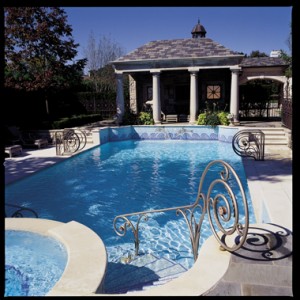It is never a good idea to start out by trying to skip anything in the design process because so much is very important in order to figure out what you really want so your design team can best advise you, but there are some short cuts you can do to save money.
For the Client
Depending on the scope of your project, you can save money by doing your homework. If you are only doing furnishings, familiarize yourself with whatever style you like and give your designer photos. If you can determine what pieces you definitely want to use, photograph them and dimension them so your designer won’t have to. If your project is more extensive such as a remodel or construction, again research your plumbing, appliance and cabinet preferences and give your designer some input to get the project moving in the right direction.
Never skimp on planning and discussing your final goal, but if you can do some of the leg work and shop yourself, you can help lessen the costs of your designers’ fees. If you choose to skimp on the details, your result could be problematic. Spending money should be a result of a well prepared budget inclusive of all costs from your designer and your contractor. I would never skimp on the finishes…that said, you usually can find lesser costly alternatives so the overall look won’t suffer. Always try not to give up on your dreams, but maybe you can live with the ceramic floor while keeping the stone countertops. Keeping your electronics simple is a way to save money and less lighting with less complicated switching can also save money. Never skimp on safety but you can possibly live with less costly materials which could be upgraded at a later date if you so choose.
Sometimes while we are shopping with a client, they will see something that is absolutely the most beautiful item they have ever seen and it is fatal to their budget. If this happens to you and you can’t live without it, go ahead and determine what the damage will be to your budget and determine how best to go about incorporating it into your plan. If you have to wait until a later date to do something, maybe that is the solution, or finding less costly items for the balance of the project, but usually that is not the case. Remember, a budget is only that, an estimate of what things could cost…you are in the driver’s seat, so your designer can’t make you over-spend, only embarrass you into doing so! Discuss with your designer what could be done so you can have that wonderful item. Recently we did that with one of our own projects…the client wanted an antique item which was so out of the budget, we determined we could do without a table in the corner of the library and only do a floor lamp instead of a table. We also used some of his existing pieces which helped balance the budget. There are a lot of ways to stay on track, but most likely you will go over the budget, so factor that into your overall cost scenarios and have a contingency plan for just such occasions.
For the Designer
When your client wants to control the spending, let them know this is their option, and let them know you will work with them on this issue…all while attempting to give them the best possible look without overspending. This is really difficult to do because most clients don’t know everything they will encounter while working on this project…you should. Most clients go over their budget, but to start off by doing so will most certainly create negative consequences later. We had a client who told us if they really wanted to purchase something over the budget, they would make that decision…after about eight such decisions, they were complaining about how they were so over budget and that we had to finish their project without any profits…guess how that one came out! Remember to caution your clients about going over the budget and if you are the one suggesting they do, then you need to be prepared for an inevitable argument or have a solution on how to achieve the overall budget with an alternative to bring the budget in line.
For the Designer and Client
Remember, a budget only includes what you have included and if you determine to go over budget, there should be no blame unless you have been deceived, so don’t deceive your client and clients should not try to deceive their designers…it ruins relationships.
